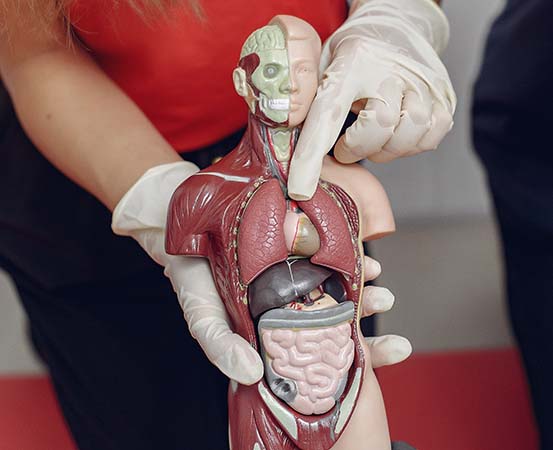
Is your heart in the right place? For some people, it is literally so. Those who have their heart on the right side of the chest are diagnosed with a condition called dextrocardia.
Doctor Sreekanth B Shetty, senior consultant and head, Interventional Cardiology, Sakra World Hospital, Bengaluru, explains, “When you look at the mirror, you see your inverted image. Similarly, in case of dextrocardia, the heart is placed in an inverted position on the right instead of the usual left.”
Dr Dimpu Edwin Jonathan, consultant interventional cardiologist, Aster RV Hospital, Bengaluru, explains that dextrocardia is a rare congenital condition. Genetic changes during pregnancy are known to play a role in the positioning of organs in the body.
READ MORE :
Eight tests for better heart health
Tachycardia: Five top variants of a racing heart
Pregnancy and heart health: two hearts in one body
Blood and iron: Anemia can affect your heart health
“Sometimes, dextrocardia is accompanied by inversion of other abdominal organs as well,” explains Dr Shetty.
Where is your heart?
Dr Sanjay Kumar Chugh, director of Cardiology, and Interventional Cardiology, Aarvy Healthcare Super Speciality Hospital, Gurugram, recalls the case of a 35-year-old male who complained of chest pain and was asked to take an ECG test. The report looked rather unusual to the doctor.
“Unlike in normal adults, this patient’s ECG showed non-progression of R waves across pericardial leads (electrodes placed at different positions on the chest wall to check the electrical activity of the heart),” explains Dr Chugh.
Dr Chugh then asked his technician to repeat the process by placing ECG electrodes on the right instead of the left.
“That’s when we realised that we were faced with a case of dextrocardia,” explains Dr Chugh.
He recalls that the patient’s echo was done with great difficulty because of the right-left inversion of the heart. The echo showed no other discrepancy and the other organs were in the right place. “The liver was on the right, the chambers of heart (upper and lower) and great vessels (vessels that bring blood to and from the heart) were related normally,” recalls Dr Chugh.
Despite some challenges, angiography was completed successfully and Dr Chugh found a very mild form of coronary disease in the patient. “He was discharged on medical therapy,” Dr Chugh adds.
According to Dr Jonathan, this condition can be diagnosed during pregnancy scans (prenatal screening), before childbirth or even after childbirth.
Different types of dextrocardia
Dextrocardia with situs solitus: Situs solitus means that all the organs in the chest and abdomen are in their normal position.
This is the simplest type of dextrocardia where the heart is a mirror image of a normal heart. “So, only the heart is on the opposite side of the body, and there are no other anomalies with the heart or other organs,” explains Dr Shetty.
This condition is usually not concerning. However, in rare cases, the heart may contain some structural abnormalities (a hole, ventricular septal defect or narrowing of the pulmonary artery).
Dextrocardia with situs inversus: This refers to the heart or some other organs of the body being flipped or inversed from their normal position. “For instance, the liver could be on the left side instead of the right or the spleen may be on the right side instead of the left,” explains Dr Shetty.
Kartagener’s syndrome: When dextrocardia and situs inversus occur along with other abnormalities, some people can also get affected by a condition called primary ciliary dyskinesia (PCD) and have Kartagener’s syndrome.
In this syndrome, the cilia (small hairs) in your respiratory tract are not developed which leads to frequent infections like chronic sinusitis and bronchiectasis.
“They will have repeated respiratory infections along with impaired development of secondary sexual characters apart from infertility,” explains Dr Shetty. However, it is a unique syndrome and does not affect all patients with dextrocardia.
Dextrocardia with situs inversus totalis: In this case, the heart and the entire thoracic and abdominal cavity organs are inverted mirror images of their usual positions.
Dextrocardia and heart defects
People with dextrocardia may also have structural issues like double outlet right ventricle (where the aorta connects to the right ventricle instead of the left), endocardial cushion defect (where the walls separating all four chambers of the heart are deformed or absent), pulmonary stenosis (narrowing of the pulmonary valve) or atresia (where the pulmonary valve does not form properly).
“Other issues like single ventricle instead of two can also cause problems,” explains Dr Jonathan.
“Another anatomical issue could be d-TGA (Dextro-Transposition of the Great Arteries), which means that the position of the aorta and pulmonary artery are switched. In addition, ventricular septal defect (a hole in the wall that separates the right and left ventricles) could also cause complications in the functioning of the heart,” explains Dr Jonathan.
Treating dextrocardia
“Not everyone with dextrocardia needs treatment and the nature of treatment depends on the cardiovascular or physical problems a person may have in addition to dextrocardia,” explains Dr Jonathan.
A person having mirror-image dextrocardia with no heart defects doesn’t require any treatment.
“It is always important and advisable to inform a child’s health care provider about his/her heart being on the right side of the chest,” says Dr Jonathan.
If dextrocardia is accompanied by heart defects, then the person may need surgery.
Takeaways
- Dextrocardia is a rare congenital condition where the heart is formed on the right side instead of left during embryological development.
- In addition to the heart, some other internal organs may also be a mirror image of their usual positions.
- Dextrocardia accompanied by heart defects may require surgery.

















